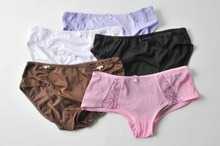Fiberglass Itch Remedies
Fiberglass, a common ingredient used in the manufacture of insulation, boats and window treatments, can be an irritant when the small glass fibers become embedded in the skin and cause itching. According to Derma Harmony, the condition, commonly called contact dermatitis, is usually first apparent in the hands or wherever the body came in contact with the substance, and can spread to other areas of your body through touching 123. Treatment depends on your body's reaction to the fibers and how quickly you take action.
Wash
The immediate solution is to remove the glass fibers that are causing the itching. According to Derma Harmony, you should soak your hands in warm, soapy water to open your pores and allow the slivers to soften and slide out. The sooner you apply the warm water, the better chance you have of alleviating the spread of the fibers to other parts of your body. When fiberglass pieces come in contact with your face or other body part that can't be soaked, use a warm, wet cloth and place the cloth over the skin. Avoid rubbing so the shards don’t become further lodged deeper in your skin. Once you've removed the fibers from your skin, the resulting red rash should disappear within a week. Treat the area with continued gentle washing without scrubbing.
- The immediate solution is to remove the glass fibers that are causing the itching.
- When fiberglass pieces come in contact with your face or other body part that can't be soaked, use a warm, wet cloth and place the cloth over the skin.
Topical Medications
Treatments for Blocked Sweat Glands
Learn More
According to the Harvard Medical School, the red and itching that follows contact with fiberglass can be treated with topical medications such as corticosteroids, antihistamines and moisturizers 2. Inflammation is relieved with corcosteroid ointments or creams that contain ingredients such as desonide, hydrocortisone, desoximetasome or fluocinonide. The preparations are available through a doctor's prescription and over the counter. When the creams do not alleviate the itching, corticosteroids can be delivered orally or by injection. Antihistamines, many of which are available over the counter, help to control the itching sensations. The most effective contain fexofenadine, hydroxyzine or cetrizine. Moisturizers that won't cause additional irritation are useful to restore the skin's texture. Common remedies include petroleum jelly or oatmeal bath treatments.
- According to the Harvard Medical School, the red and itching that follows contact with fiberglass can be treated with topical medications such as corticosteroids, antihistamines and moisturizers 2.
Prevention
The most effective remedy for fiberglass itch is to avoid skin contact with materials that contain fiberglass. According to MayoClinic.com, you should take time to identify fiberglass substances whenever possible and remove the products with plastic or cotton gloves, especially if your dermatitis lasts for weeks following any exposure. Always wear glasses when working around or handling the material. Wear lightweight cotton clothing to protect your arms and legs from exposure. If exposure is unavoidable for short periods of time, you can lather your exposed skin with petroleum jelly to keep it safe.
- The most effective remedy for fiberglass itch is to avoid skin contact with materials that contain fiberglass.
- According to MayoClinic.com, you should take time to identify fiberglass substances whenever possible and remove the products with plastic or cotton gloves, especially if your dermatitis lasts for weeks following any exposure.
Related Articles
References
Resources
Writer Bio
Linda Ray is an award-winning journalist with more than 20 years reporting experience. She's covered business for newspapers and magazines, including the "Greenville News," "Success Magazine" and "American City Business Journals." Ray holds a journalism degree and teaches writing, career development and an FDIC course called "Money Smart."









